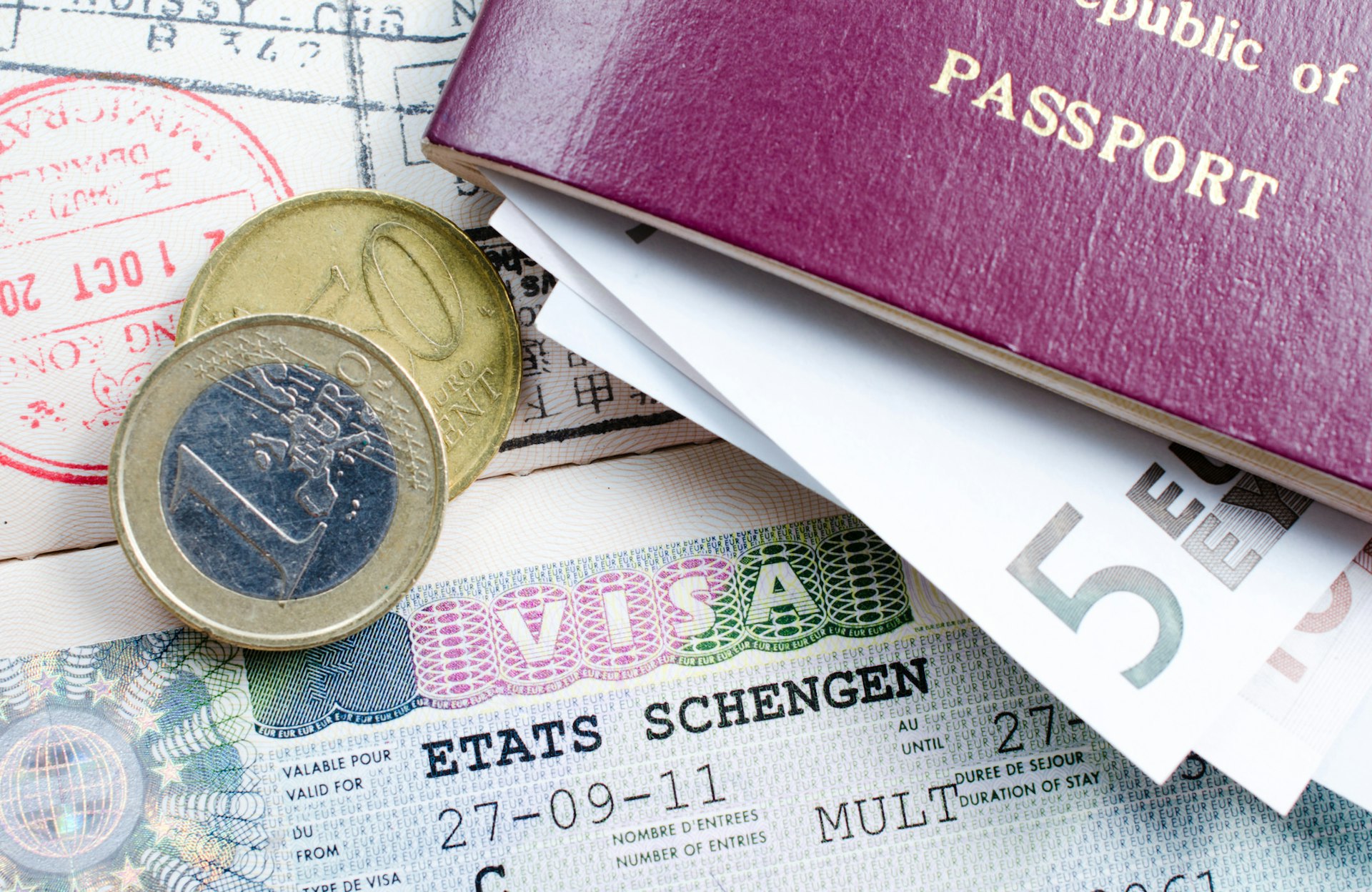After multiple delays, EU officials said they'll finally introduce the ETIAS regulation in 2025. Initially planned for implementation in late 2023, the system will require forward planning from US travelers and others when visiting Europe.
You've booked your tickets, made reservations at your favorite restaurants, but hold on, there will soon be one more essential task to add to your checklist when planning your European vacation.
Beginning in spring 2025, visa-exempt foreigners visiting 30 European countries will have to fill out an application for the European Travel Information and Authorization System (ETIAS).
The new screening process, which includes an online registration and small application fee, is essentially a background check aimed at protecting the borders of countries within Europe’s Schengen Zone. An ESTIAS is not a visa, but similar to ESTA, a visa-waiver program used in the United States since 2008.
The new process also means travelers won't receive passport stamps anymore. Instead, their faces and fingerprints will be scanned and recorded in a new digital registration system starting next autumn. The changes are anticipated to lead to shorter waiting times at entry points and a more streamlined process, according to officials.
The security measure will impact roughly 1.4 billion travelers from over 60 countries including the US.

While applying for an ETIAS might initially seem daunting, it's just a tiny bump on the trip-planning journey. Travelers should be far more concerned about the increasing regularity of heat waves scorching southern Europe in the late spring and summer months and over-tourism plaguing cities from Amsterdam to Venice. Filling out the ETIAS application, on the contrary, should be quick and hassle-free.
Here's everything you need to know.
Who needs to apply for an ETIAS?
Passport holders from around 60 countries – including citizens from the US, Canada, Mexico, and the UK – will require an ETIAS authorization for short-term stays, regardless of age. The EU defines a short-term stay as any visit, or combination of stays, that last up to 90 days within a 180-day period. Without an ETIAS, travelers risk being turned away at the border.
Visit the ETIAS website for a complete list of passport holders and European destinations affected by the change.
How do I apply?
Once the ETIAS application becomes available online, travelers (or authorized third parties, like family members and travel agencies) can fill out the digital form via the ETIAS website or app, which should take roughly 10 minutes.
To apply, you’ll need to provide an approved, up-to-date travel document, like a passport, along with personal information, including your phone number, parents’ first name(s), level of education, current occupation, and details about where you intend to stay. Applicants must also provide details about past criminal convictions and visits to war zones.
How much does the application cost?
For applicants ages 18-70, there will be a non-refundable €7 fee (roughly $8) payable by debit or credit card. Anyone younger than 18 or older than 70 won't be charged the application fee. Family members of EU citizens are also exempt from payment.
When should I apply?
EU officials recommend applying before booking hotel and flight reservations. To be on the safe side, this should be no later than one month before an intended trip.
While most ETIAS applications will be processed within minutes, some decisions may be delivered within four days. That wait time can extend up to 14 days if additional information is required and up to 30 days if you're asked to interview.

Can I apply for an ETIAS without upcoming travel plans?
Yes, though you’ll need to indicate the country where you intend to stay on your application. Once authorized, it’s possible to change plans and travel to any of the 30 countries requiring an ETIAS.
How will I know if I’m approved?
After applying online, ETIAS applicants will receive two emails. The first email will confirm that the application has been successfully submitted. Once the application is processed, you'll receive a second email with an authorization decision.
How long will my ETIAS authorization last?
ETIAS authorization will be valid for three years or until your passport expires, whichever comes first. You can leave and re-enter countries requiring an ETIAS as often as you desire within that window, as long as your travel doesn't exceed the short-term stay limit.
What type of ETIAS documentation will I need to enter the EU?
You don’t need to print out the actual ETIAS confirmation, but it’s imperative to bring the passport linked to your authorization.
Ensure all the details on your passport and ETIAS match before traveling – and that your passport is valid for three months after your departure date – or you’ll be turned away at the border.
What happens if my application gets denied?
You’ll receive a notification explaining why your application was refused, along with follow-up information about appealing the decision.
To avoid a refusal, double-check your work before submitting the application. Even simple typing errors – like the misspelling of a name – can result in rejection. Don’t let a misplaced vowel thwart your grand European adventure.












